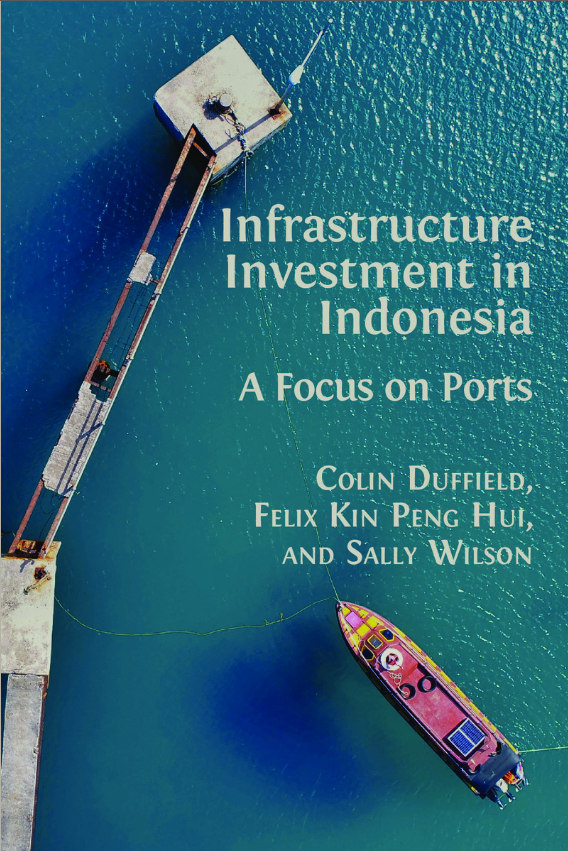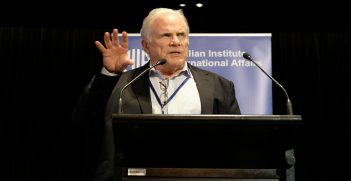Book Review: Infrastructure Investment in Indonesia: A Focus on Ports

A close examination of ports and other infrastructure projects in Indonesia and Australia brings to light a paradox of success for global shipping networks and raises questions about how future infrastructure projects should be funded, built, and eventually managed.
This book presents joint research by the University of Melbourne, the University of Indonesia, and Gadjah Mada University on ports and other infrastructure projects in both Indonesia and Australia. A short introductory chapter describing the Indonesian economy is followed by three chapters on infrastructure in general, and the remaining eight chapters focus on ports. Of the three editors and 13 other contributors, most have backgrounds in engineering and/or management. The lack of economics expertise among the contributors—given the importance of infrastructure to economic development—is notable.
Chapter topics include the relationship between ports and their hinterlands (illustrated by a case study of Port Botany in Sydney); the efficiency of Australian and Indonesian ports; innovation in the development of ports; the gap between policy expectation and realisation in relation to Indonesian ports; alternative ways to finance port projects; and the critical importance of land transport in relation to ports (illustrated by three Indonesian case studies).
Ironically, a key problem facing major seaports results from their success. Established long ago at the edges of nascent urban centres to handle exports and imports, they served their purpose well. But as their parent centres grew to become towns and cities, the space needed to accommodate their expanding operations has typically been lacking. As a consequence, trucks are forced to wait for access on nearby roads and streets where they cause enormous congestion and generally degrade the amenity of the surrounding areas for residents. Meanwhile, relatively little use is made of the rail network, because of the historical legacy of having goods and passenger trains using the same lines, and because of the impracticability of using rail to deliver goods to their final destinations.
Solutions to the problem of insufficient space are discussed in Chapter 5. One is to reclaim land from the sea, but the scope for doing so is limited. Another (not mentioned explicitly in the book) is to push the boundary of the port into the adjacent urban area, but this may be very costly if the existing owners of the land are properly compensated, and politically very difficult if they are not. Political opposition will also arise from local residents angry about increased truck traffic. A third possibility is to establish new seaports if there are suitable sites available nearby that can be readily connected to existing road and rail networks. Finally, dry ports, to which operations other than loading and unloading ships’ cargoes can be outsourced, may be established, provided suitable road and rail connections exist or can be created. In some cases, a dry port may be established next to, or developed in conjunction with, a special industrial zone.
The problem of congestion around both seaports and dry ports can be reduced through more efficient traffic management. Among other things, this requires trucks be given firm time allocations for delivering and collecting loads to eliminate the need to park outside for lengthy periods. Chapter 11 discusses the scope for these kinds of improvements to port operations in detail.
Chapter 10 looks at alternative ways to finance major port projects, and it is here that the absence of an economics perspective is most problematic. The financing issue is inextricably linked with the question of ownership, but the latter issue is not discussed in any depth. Although state-owned enterprises (SOEs) currently play a major ownership and operational role in Indonesia’s ports, along with private sector partners in some cases, the failure to elaborate on these existing arrangements is a major shortcoming.
The option of private ownership of Indonesian seaports is absent from the discussion, reflecting successive governments’ strong nominal support for public-private partnerships (PPPs) because of the difficulty of raising sufficient tax revenue for big infrastructure projects. In practice, however, it has been possible to move such projects off budget by reliance on SOEs, which are able to tap the state banks for funding. Thus, although PPPs offer the prospect of private sector financing, few have come to fruition. Indeed, having already selected five consortia for the qualification stage of a tender to build, finance, and operate a major new container terminal in Jakarta, the former Yudhoyono government abruptly appointed the incumbent SOE instead. Indonesia’s failure to implement PPPs is noted, but not explored.
The notion that private sector firms with years of experience managing major international seaports would manage ports more efficiently than SOEs seems to carry little weight in policy thinking. Nor is much attention given to the details of PPP contracts, which determine their attractiveness to potential private sector partners. In particular, a requirement for majority government ownership is a major barrier: private sector investors “are unlikely to invest… if they are not gaining control over the business” (p.259).
Financing would not be an issue if ports were put in the hands of the private sector. Revenue would be derived from customers (shipping lines, trucking companies, and railway operators), and the excess over operating costs (including the capital costs of fixed assets) would be the profit enjoyed by port operators. The prospect of generating such profits provides the basis for soliciting bids from well-qualified port operators for a long-term or permanent lease on the site of the port, which would enable the government to capture the natural monopoly rent. It is disappointing that the book devotes virtually no attention to full private sector ownership and operation of ports as the means of maximising efficiency and dealing with the financing problem.
The methodology employed in the study relies rather too heavily on stakeholder surveys, focus group discussions, and interviews to elicit opinions on matters such as port financing methods. Policymakers should be concerned about maximising the social gains from port operations, so it is not particularly useful to ask people about such matters from their individual point of view. For example, finance with government guarantees is attractive to borrowers, as are subsidies (“availability payments”), but prudent finance ministers will want to limit the risks and burdens they impose on taxpayers.
In short, this book provides a great deal of information about technical issues relating to seaports, but it fails to consider the more fundamental issue regarding the choice between public and private sector ownership.
Ross H. McLeod is an associate professor at the Crawford School of Public Policy at the Australian National University. His research focuses on the Indonesian economy.
This is a review of Colin Duffield, Felix Kin Peng Hui, and Sally Wilson’s Infrastructure Investment in Indonesia: A Focus on Ports (Open Book Publishers), ISBN 978-1-78374-822-8.
This article is published under a Creative Commons Licence and may be republished with attribution.





